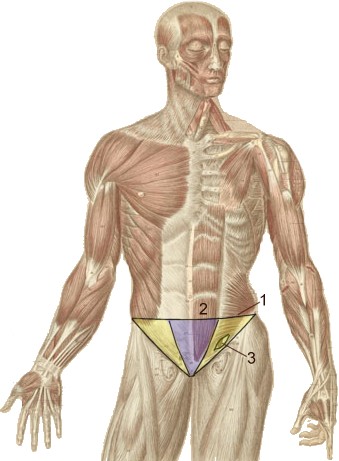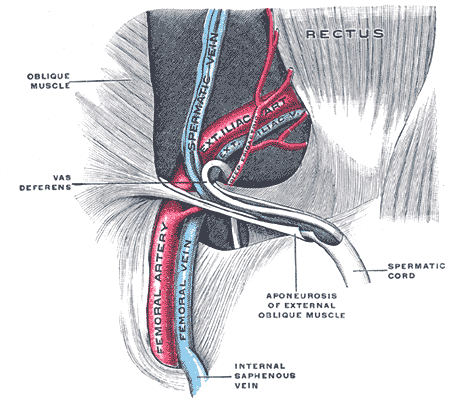Enhance your health with free online physiotherapy exercise lessons and videos about various disease and health condition
Athletic Pubalgia
Athletic Pubalgia (Sports Hernia or Gilmore’s groin)
Sports hernia involves injury to the posterior wall ofthe inguinal canal and can appear as a tear of the transverses abdominis muscle or as a disruption to the conjoined tendon (tendon of insertion of the internal oblique and transverses abdominis muscles). The internal oblique muscle and external oblique aponeurosis of the internal inguinal wall may also be involved. This injury is more common in men than women and typically occurs in fast-moving sports that involve twisting and turning, like soccer, football, rugby, and ice hockey. Because only the posterior abdominal wall is injured, the sports hernia differs from the more common inguinal hernia in that it does not involve a clinically detectable hernia.

This is a controversial injury. Some authors distinguish hockey player’s syndrome (slap shot gut), gilmore’s groin, sports hernia, and athletics pubalgia from each other. However, for the purpose of brevity, the author has chosen to label all of these as sports hernia.
Differential diagnosis of Gilmore’s groin
Differential diagnosis includes adductor strain, osteitis pubis, or a true inguinal or femoral hernia.
Symptoms of Gilmore’s groin

Athletes may present with unilateral groin pain exacerbated by exercise. In chronic cases, the athlete may have pain with activities of daily living. It is usually insidious in onset and may radiate to the hip. Sudden movements, sit-ups, and increases in intra-abdominal pressure also exacerbate the pain.
Examination of Gilmore’s groin
Examination is usually performed by inverting the scrotal skin with a finger and palpating for pain over the conjoined tendon, pubic tubercle, and mid-inguinal region. Radiographs are important to rule out other injuries.
Treatment of Athletic Pubalgia
Treatment of this group of disorders is controversial. The simplest initial maneuver is rest followed by slow resumption of physical activity with supervised physical therapy consisting of core and pelvic stabilization, strengthening, and flexibility training. The athlete should avoid sudden, sharp, cutting movement. Those who insist on continuing activity will take considerably longer to heal. Supplemental administration of NSAIDs and application of ice packs 3–4 times a day for 20–30 min may also be beneficial. Athletes who fail conservative treatment should be referred to a surgeon for evaluation.
In men, chronic pelvic pain is often misdiagnosed as chronic bacterial prostatitis and needlessly treated with antibiotics exposing the patient to inappropriate antibiotic use and unnecessarily to adverse effects with little if any benefit in most cases.
Return from Athletic Pubalgia to Sports Physical Therapy
Read more about Pelvic pain here -
Recent Articles
|
Author's Pick
Rating: 4.4 Votes: 252 |

